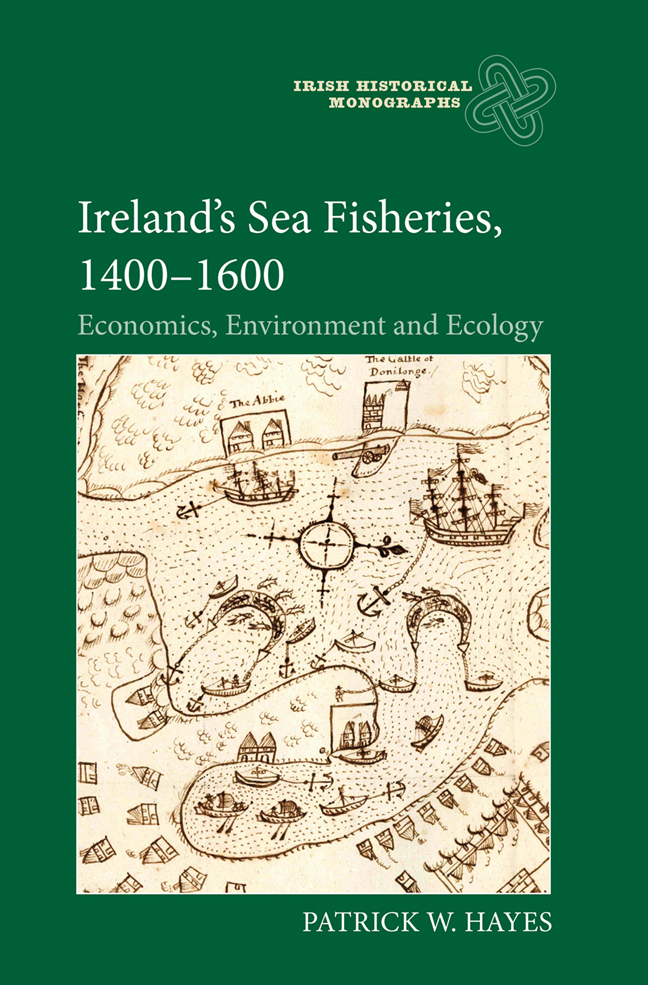Book contents
- Frontmatter
- Dedication
- Contents
- List of Illustrations
- Acknowledgements
- Abbreviations
- Glossary of Fish Species
- Introduction
- 1 The Development of Fisheries, 1400–1500
- 2 Diversity and Cooperation in Sixteenth-Century Fisheries
- 3 The Fish Trade
- 4 The Impact of War and Piracy
- 5 Fish Consumption and Provisioning
- 6 Oceanographic Variation and Environmental Change
- Conclusion
- Appendices
- Bibliography
- Index
- Miscellaneous Endmatter
5 - Fish Consumption and Provisioning
Published online by Cambridge University Press: 22 February 2024
- Frontmatter
- Dedication
- Contents
- List of Illustrations
- Acknowledgements
- Abbreviations
- Glossary of Fish Species
- Introduction
- 1 The Development of Fisheries, 1400–1500
- 2 Diversity and Cooperation in Sixteenth-Century Fisheries
- 3 The Fish Trade
- 4 The Impact of War and Piracy
- 5 Fish Consumption and Provisioning
- 6 Oceanographic Variation and Environmental Change
- Conclusion
- Appendices
- Bibliography
- Index
- Miscellaneous Endmatter
Summary
Iscach mara muiridi
A críchaib Baí is Béire
Medbhán Faíde firghlaine
Duileasc a cuanuibh Cléire
[Deep sea fishing
From the regions of Dursey and Bere
Laver of clean and fresh Whiddy
Dulse from the harbours of Clear Island]
From the twelfth-century text Acallam na SenórachHitherto, this book has focused on the mechanics, economics, and ecology of fisheries in fifteenth- and sixteenth-century Ireland, so it can be easy to forget the prime reason why fishing was happening: to provide food. Of course, there are non-food uses for marine products; farmers would have scattered waste fish bones and meat over the fields to add nutrients to the soil. Seaweed too has been used on fields as fertiliser for centuries. But there is no indication that these practices supported large industries in the late medieval or early modern periods. In the twentieth century, the production of fishmeal for animal feed became a major industry; indeed, in some European countries, the consumption of fishmeal even outmatched the demand for fish as food. However, the fishmeal industry did not exist in the fifteenth or sixteenth centuries, and Ireland has never been a major producer, even in modern times.
Food production was almost the sole focus of fisheries in fifteenth- and sixteenth-century Ireland; and like any foodstuff, elements of culture, taste, tradition and ritual factor into how people chose and consumed fish. Cured fish was also a vital supply for armed forces in this period and was commonly eaten by soldiers and mariners alike. If we want to fully understand fluctuations in the production and demand of fish, we have to try to understand these elements of food culture and consumption too.
Until recently, Irish historians have shown little interest in studying food or consumption in the early modern period. The task is a challenging one; it is difficult to determine what foods people from different social classes consumed daily, and even more difficult to know how consumption patterns changed over time. This situation is not helped by a dearth of documentary sources detailing daily diet. In 1992, Louis Cullen wrote that Irish consumption history had been too focused on the role of the potato and the Great Famine of the 1840s. He also contended that diet has been used by Irish historians to emphasise poverty and class distinctions, to the detriment of more analytical or detailed studies.
- Type
- Chapter
- Information
- Ireland's Sea Fisheries, 1400-1600Economics, Environment and Ecology, pp. 194 - 222Publisher: Boydell & BrewerPrint publication year: 2023

